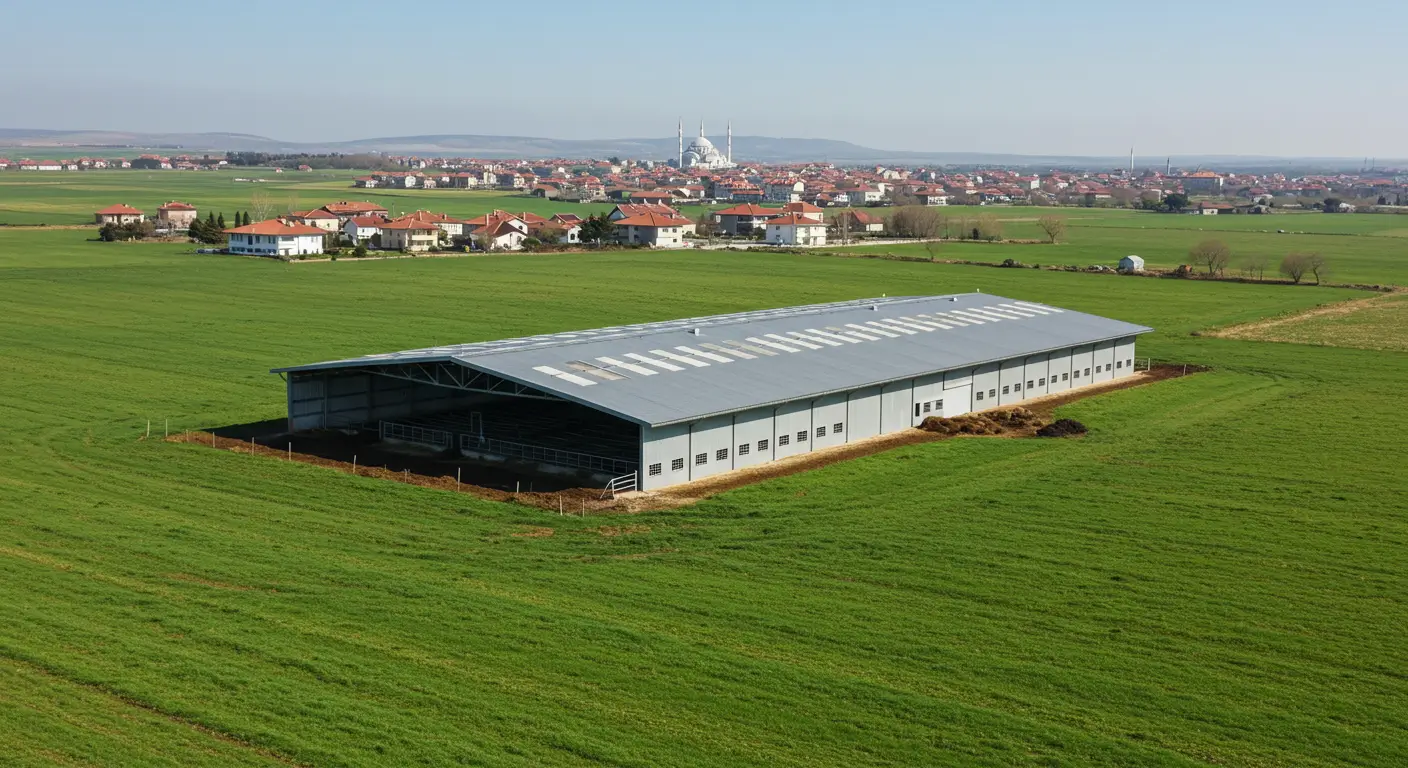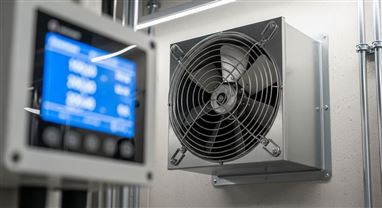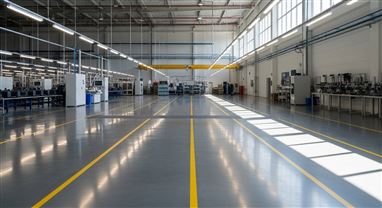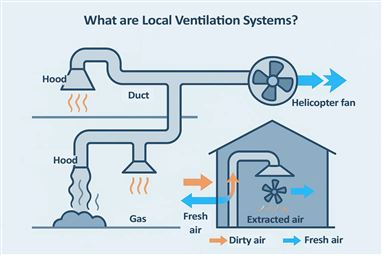Barns should be located at least 500 meters away from residential areas. This distance is of great importance for both environmental health and quality of life. To prevent issues such as odor, noise, and flies from affecting residential zones, this setback limit has been set as a standard by most municipalities and provincial directorates of agriculture. Attention to this distance is also necessary to prevent risks that may arise from animal waste.
A barn positioned at an appropriate distance offers advantages in terms of both animal welfare and environmental safety. Barns built too close to residential areas can damage neighborly relations and lead to punitive measures. One of the most closely checked elements during the licensing process is this distance criterion. Therefore, the correct location should be determined at the planning stage, taking into account the relevant local regulations.
However, just as important as distance is equipping the barn with proper ventilation systems. When adequate ventilation is not provided, bad odors can spread for kilometers. This issue cannot be solved solely by meeting the distance criterion. For this reason, modern ventilation solutions play a critical role in minimizing the barn’s impact on the environment.
What Is the Legal Setback Requirement for Barn Installation?
When installing a barn, it is a legal requirement to build it at a certain distance from residential areas. In Türkiye, this distance is generally set at a minimum of 500 meters. However, this distance may vary depending on regional regulations. Particularly within municipal boundaries, stricter rules may be applied to protect environmental health in agricultural activities. Up-to-date legislative information should be obtained from the relevant district agricultural directorates or municipalities before determining the location of the barn.
This distance requirement aims to create a safe living environment not only for people but also for animals. Barns established too close to residences can cause problems such as odor, waste, and pests. This situation harms neighborly relations and leads to environmental complaints. In addition, if the appropriate distance is not met during inspections, the building permit may be canceled or penalties may be imposed.
When selecting land for installation, not only distance but also wind direction, land slope, and soil structure should be considered. Planning the barn in harmony with the environment prevents problems that may arise in the future. Moreover, many enterprises today provide technological support to this distance requirement by reducing odor dispersion with ventilation systems. Nevertheless, the basic rule is not to fall below the legally specified distance.
What Are the Risks of a Barn Being Close to Residential Areas?
Placing a barn too close to residential areas can lead to serious consequences that negatively affect both environmental health and social life. Plans made without regard to the appropriate distance can, over time, put both the business owner and local residents in a difficult position. This is not limited to odor or visual pollution; it also brings a chain of risks such as health problems, legal sanctions, and economic losses.
Major risks posed by barns near residential areas:
- Odor pollution: Bad smells from animal waste significantly reduce quality of life.
- Pest and fly problems: Humid environments trigger pest breeding and increase disease risk.
- Contamination of groundwater sources: Uncontrolled liquid waste can seep into local water sources and pose health threats.
- Noise disturbance: Animal sounds, especially at night, disturb nearby residents.
- Legal sanctions: Barns established at non-compliant distances may receive fines or be shut down during inspections.
- Social unrest: Neighborly relations deteriorate, complaints increase, and the enterprise’s reputation is damaged.
These risks can turn into problems that affect not only the enterprise but the entire surrounding area. Farms operating near urban zones, in particular, should give importance to distance rules and ventilation systems to minimize environmental impact. Thus, legal compliance is ensured and a sustainable production environment is established.
How Is the Distance Criterion Evaluated When Obtaining a Barn License?
Distance from residential areas is one of the most closely scrutinized criteria when obtaining a barn license. When evaluating the location of the barn, the relevant authorities carefully examine the distance to nearby settlements, drinking water sources, and agricultural land. In Türkiye, the 500-meter rule is generally applied, but this distance may vary depending on municipal and provincial administration regulations. Regional provisions must be checked before choosing a site.
In the project submitted during the application process, the barn’s site plan along with its coordinates and distance measurements must be clearly specified. In some regions, it is mandatory that these data be prepared by surveying engineers. After these documents are added to the application file, they are technically evaluated by the relevant district agricultural directorates and environmental inspection units. If distance conditions are not met, the licensing process is halted or the project is revised and re-evaluated.
The distance criterion is a determining factor not only at the licensing stage but also for the enterprise’s sustainability. Barns located too close to residential areas may cause environmental complaints in the future, which can lead to permit revocation. Therefore, ensuring the correct distance is not only a legal requirement but also vital for the enterprise’s reputation and longevity.
How Do Barn Ventilation Systems Affect Distance Requirements?
Ventilation systems used in barns play an important role in controlling odors and harmful gases released into the environment. When effective air circulation is ensured, the accumulation of heavy gases such as ammonia is prevented, and their dispersion outdoors is minimized. This directly reduces the effects related to the distance between the barn and residential areas. Especially fan-assisted systems improve indoor air quality while greatly reducing negative effects on the outdoor environment.
Thanks to modern ventilation solutions, barn projects located closer to the legal distance limit become technically more acceptable. However, these systems must be properly designed, their capacity must match the number of animals, and they must be regularly maintained. Otherwise, even the most advanced system cannot deliver the expected performance. The presence of ventilation systems is considered a positive indicator for environmental health both during the licensing process and in operating activities.
Odor and Hygiene Problems in Barns Close to Residential Areas
Barns located near residential areas can quickly lead to environmental problems related to odor and hygiene. When intensive animal waste is not adequately treated and cleaned, it causes bad odors. These odors spread over a wide area—especially in summer—and significantly reduce quality of life. This situation, which leads to complaints and tension among neighbors, puts the enterprise in a difficult position both socially and legally.
From a hygiene perspective, the greatest threats are manure buildup and uncontrolled waste management. When the barn floor is not cleaned regularly, microorganisms multiply rapidly. This leads to the proliferation of unwanted pests such as flies, insects, and rodents. At the same time, the risk of disease transmission increases. This environment poses a health threat not only to animals but also to people living nearby.
To prevent such problems, stricter hygiene standards must be maintained in barns close to residential areas. These risks can be reduced with mechanical ventilation systems, regular cleaning protocols, and appropriate waste storage areas. However, despite all measures, the ideal solution is to locate the barn at a sufficient distance and manage it with a professional operational approach.
How to Properly Position a Barn for Animal Welfare
Proper placement of the barn for animal welfare forms the basis of healthy and efficient production. The barn’s location directly affects both the animals’ stress levels and their environmental interactions. A suitable location maximizes the benefits of natural airflow and reduces odor and moisture buildup. It also contributes to balanced planning of animals’ resting, feeding, and movement areas.
Points to consider for proper barn placement:
- Consider wind direction: Plan according to prevailing winds to prevent odor and moisture from moving toward residential areas.
- Use sunlight to advantage: Position the barn to benefit from morning and evening sun.
- Choose land suitable for drainage: Prefer sloped and permeable ground to prevent rainwater accumulation.
- Avoid sources of noise and stress: Select a location away from busy roads and industrial zones so animals can remain calm.
- Ensure ease of access: Access to feed, water, and veterinary services should be practical.
- Maintain sufficient distance from residential areas: Comply with setback criteria for both environmental health and licensing processes.
All these factors not only increase animal comfort; they also boost productivity, reduce disease risk, and contribute to the enterprise’s sustainability. Therefore, at the planning stage, not only physical but also environmental and biological dynamics should be considered.
Do Distance Standards for Barns Vary by Municipality?
One of the most important issues to consider in barn construction is that distance standards vary by municipality. Each municipality may apply different rules based on local conditions, population density, and zoning plans. While 500 meters may be considered sufficient for some local governments, this distance can be increased to as much as 1,000 meters in certain areas. These differences are determined by considering factors such as environmental health, urban development, and the potential for complaints.
Before applying for a license, it is essential to contact the municipality’s Department of Zoning and Urban Planning or the District Directorate of Agriculture and Forestry. Although standard regulations are often used as references, special decisions made by local authorities are binding. There may also be differences in practice between metropolitan municipalities and district municipalities. Therefore, at the planning stage, being familiar not only with general legislation but also with local regulations prevents loss of time and potential penalties during the licensing process.











Leave a Comment